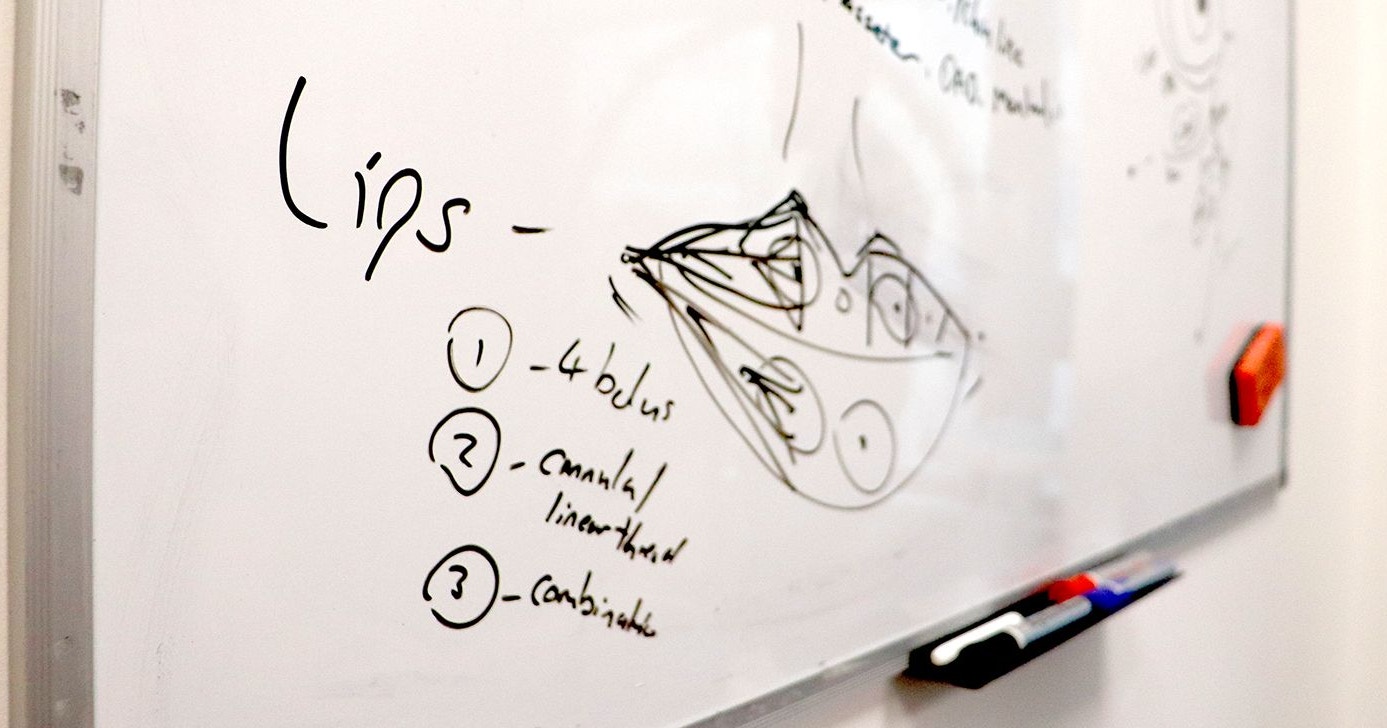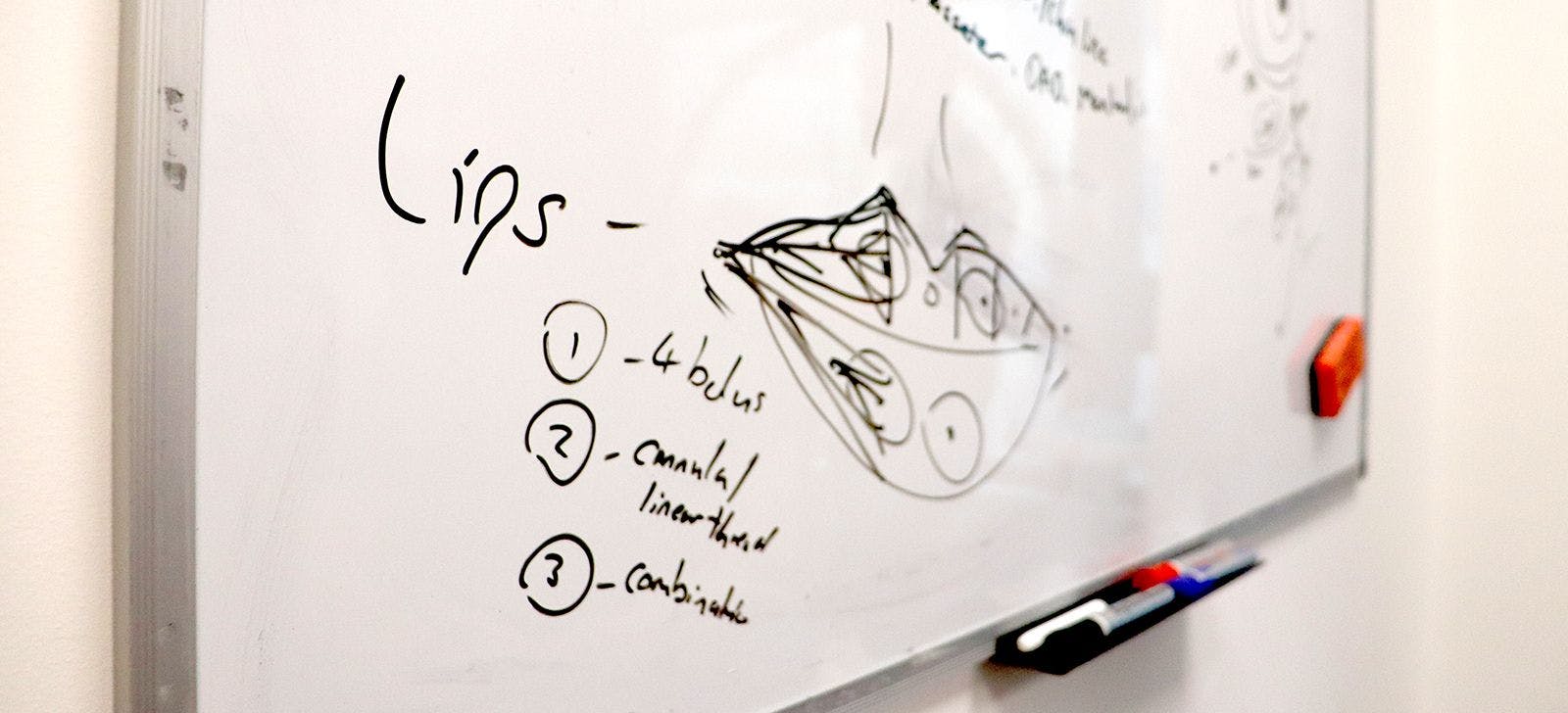Lip Anatomy: Surface Guide for Aesthetics Practitioners

To achieve optimal lip filler results, medical aesthetics practitioners need a comprehensive understanding of lip anatomy.
As one of the most prominent features of the face, lips play a crucial role in facial aesthetics and expression. They’re more than just an important aspect of attractiveness.
Our lips perform dynamic functions such as speech, eating and drinking. They also play a pivotal role in non-verbal communication. As such, ensuring your lip filler patients receive proportionate, natural-looking results is about more than simple beauty standards.
To help you understand the basics of lip anatomy, starting with the surface, we’re delving into their structure and key anatomical landmarks.
Read on for our Lip Anatomy Guide for Aesthetics Practitioners...

LIP STRUCTURE
The lips are composed of skin, fat, muscle, and mucous membrane, and are divided into the upper lip and the lower lip. The skin of the lips is thin and delicate, with a distinct transition zone between the skin of the face and the mucous membrane of the oral cavity.
In those with paler skin tones, the lips will have a red or pink colour due to the rich blood supply in this area. These shades can appear brown rather than red in patients with darker skin tones.
The orbicularis oris muscle is a key muscle that surrounds the lips and is responsible for their movement. It’s a circular muscle that surroundsthe mouth and contributes to functions such as lip puckering, smiling, and frowning. The orbicularis oris muscle, works together with the interacting lip elevator and depressor muscles for a complex range of lip movements.

ANATOMICAL LANDMARKS OF LIPS
As aesthetic practitioners, we must be familiar with several key anatomical landmarks of the lips. This helps us to ensure safe and effective lip augmentation procedures. Some of these landmarks include:
Vermilion border
The vermilion border is the sharp demarcation between the red or pink part of the lip and the adjacent skin. It's an essential feature of the lips that contributes to their definition and shape.
The vermilion border can be enhanced during lip augmentation procedures to create a more defined and aesthetically pleasing lip contour.
The shape and prominence of the vermilion border can vary among different racial and ethnic groups. In Caucasians, the vermilion border is often well-defined and distinct. There’s generally a clear demarcation between the lip and the skin.
In people of colour, particularly Black patients, the vermilion border may be less pronounced. There may be a more gradual transition from the lip to the surrounding skin. Asians may have a thinner vermilion border that is less pronounced compared to Caucasians.
Cupid's bow
The Cupid’s bow is the double curve of the upper lip, resembling the shape of a bow. It is a crucial feature of the upper lip that contributes to its attractiveness and femininity. During lip augmentation procedures, the Cupid’s bow can be enhanced to create a more defined and symmetrical shape.
Philtral columns
The philtral columns are the vertical ridges that extend from the base of the nose to the Cupid’s bow. They are an important aspect of the upper lip anatomy and contribute to its shape and definition. Enhancing the philtral columns can create a more pronounced and attractive upper lip appearance.
Oral Commissures
The oral commissures are the corners of the mouth where the upper and lower lips meet. They play a significant role in facial aesthetic and expression. They can be enhanced during lip augmentation procedures to create a more youthful, less sad looking and uplifted appearance.
White roll
The white roll is the raised margin of the vermilion border that gives the lips their distinct outline. It is an important feature of lip aesthetics and contributes to the overall lip shape and definition. The white roll can be enhanced during lip augmentation procedures to create a more defined and youthful lip contour.
RACIAL DIFFERENCES IN LIP ANATOMY
Lip anatomy can vary among different racial and ethnic groups. These differences can impact the thickness of the lips, the shape of the vermilion border, and the prominence of certain anatomical landmarks.
Thickness of lips
Generally, Black patients tend to have thicker lips compared to Caucasians and Asians. The increased thickness is due to differences in the composition of the underlying tissues. This includes a higher amount of subcutaneous fat and thicker collagen fibres. Conversely, Asians tend to have thinner lips due to less subcutaneous fat and thinner collagen fibres.
Anatomical landmarks
The shape and prominence of key anatomical landmarks, such as the Cupid’s bow and the philtral columns, can also differ among different racial and ethnic groups.
Caucasians typically have a more distinct Cupid’s bow with a classic “double curve” shape. Black people may have a less pronounced Cupid’s bow. Asians may have a different shape and prominence of the Cupid’s bow, with a more subtle curve or a flatter appearance.
Similarly, the philtral columns may also have different shapes and prominence among different racial and ethnic groups.

RESPECT EACH PATIENT'S INDIVIDUAL LIP ANATOMY
It’s important for aesthetic medicine professionals to understand and consider the differences in lip anatomy among different patient cohorts when planning and performing lip filler treatments.
A customised approach that considers the unique lip anatomy of each patient will help you to achieve natural-looking results.
Furthermore, understanding and respecting the preferences and cultural norms of patients from different racial and ethnic backgrounds is crucial. This allows you to provide quality aesthetic care that centres your patient’s goals and proportions, not your own beauty ideals.
Proper communication and a thorough clinical consultation, along with a comprehensive understanding of lip anatomy is necessary. It can help ensure you’re able to provide safe and effective lip filler procedures to patients of diverse racial and ethnic backgrounds.
Check out our Aesthetics Training page if you’re a doctor, dentist, nurse or clinical pharmacist looking to find the best aesthetics courses. You’ll find options for all levels, to learn or improve your lip filler injecting techniques.
Alternatively, drop our courses advisors a message on WhatsApp, or book a call with them for a time that suits you. They’ll be happy to run you through options for your stage of aesthetic medicine experience.
All information correct at the time of publication.
Download our full prospectus
Browse all our injectables, dermal fillers and cosmetic dermatology courses in one document
By submitting this form, you agree to receive marketing about our products, events, promotions and exclusive content. Consent is not a condition of purchase, and no purchase is necessary. Message frequency varies. View our Privacy Policy and Terms & Conditions
Attend our FREE open evening
If you're not sure which course is right for you, let us help
Join us online or in-person at our free open evening to learn more
Our Partners














STAY INFORMED
Sign up to receive industry news, careers advice, special offers and information on Harley Academy courses and services

